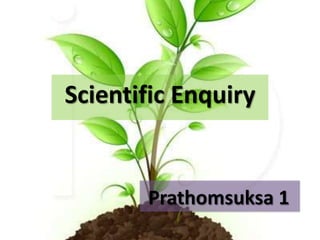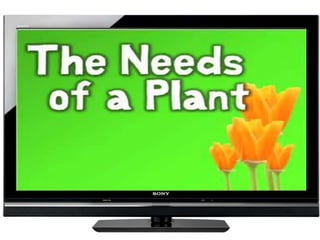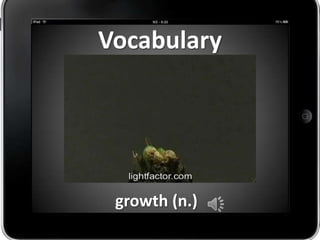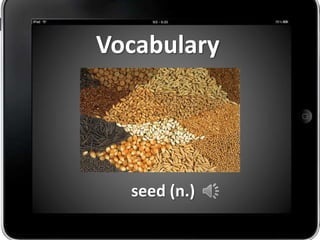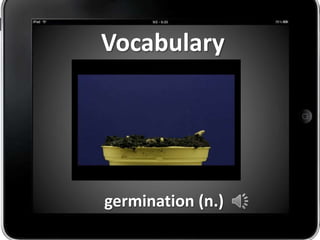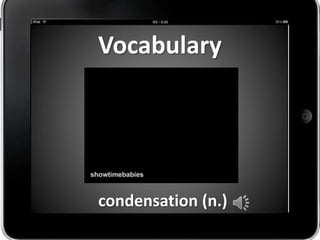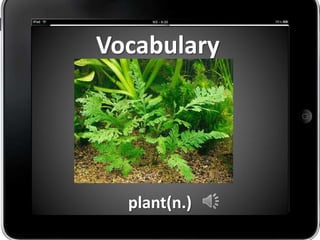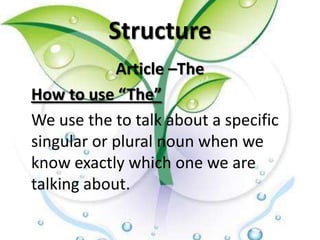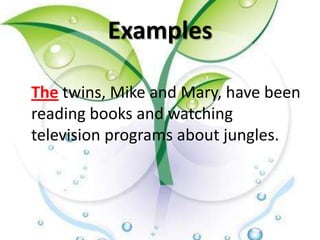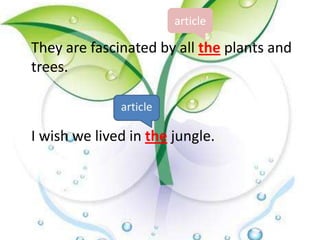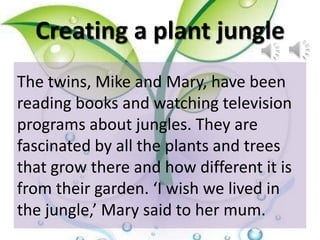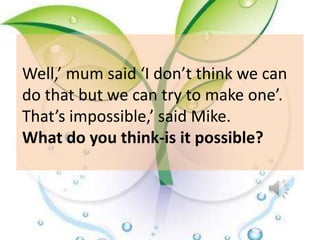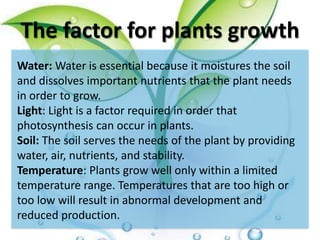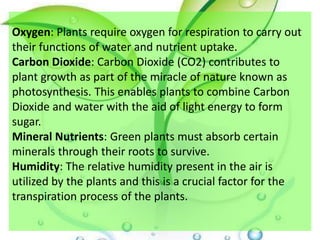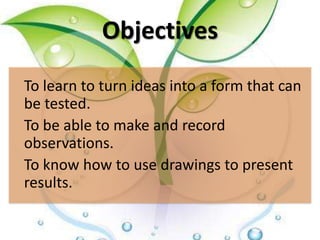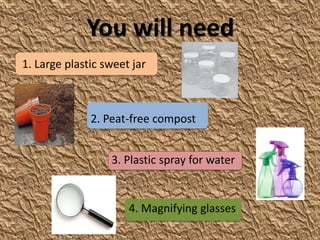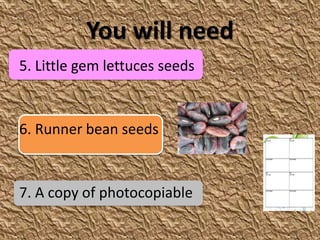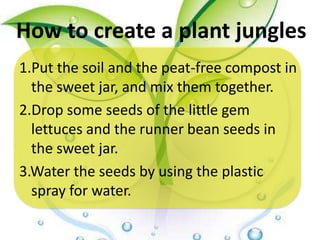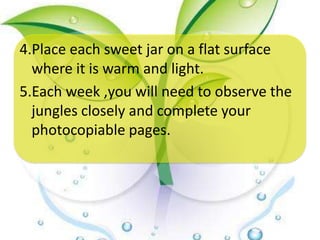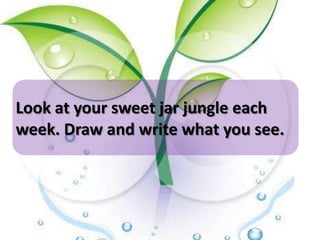Scientific enquiry (ÓĖÜÓĖ╣Ó╣ĆÓĖéÓ╣ēÓĖĪ 2)
- 1. Scientific Enquiry Prathomsuksa 1
- 2. Creating a plant jungle
- 5. Vocabulary seed (n.)
- 9. Structure Article ŌĆōThe How to use ŌĆ£TheŌĆØ We use the to talk about a specific singular or plural noun when we know exactly which one we are talking about.
- 10. Examples The twins, Mike and Mary, have been reading books and watching television programs about jungles.
- 11. article They are fascinated by all the plants and trees. I wish we lived in the jungle.
- 12. Creating a plant jungle The twins, Mike and Mary, have been reading books and watching television programs about jungles. They are fascinated by all the plants and trees that grow there and how different it is from their garden. ŌĆśI wish we lived in the jungle,ŌĆÖ Mary said to her mum.
- 13. Well,ŌĆÖ mum said ŌĆśI donŌĆÖt think we can do that but we can try to make oneŌĆÖ. ThatŌĆÖs impossible,ŌĆÖ said Mike. What do you think-is it possible?
- 14. The factor for plants growth Water: Water is essential because it moistures the soil and dissolves important nutrients that the plant needs in order to grow. Light: Light is a factor required in order that photosynthesis can occur in plants. Soil: The soil serves the needs of the plant by providing water, air, nutrients, and stability. Temperature: Plants grow well only within a limited temperature range. Temperatures that are too high or too low will result in abnormal development and reduced production.
- 15. Oxygen: Plants require oxygen for respiration to carry out their functions of water and nutrient uptake. Carbon Dioxide: Carbon Dioxide (CO2) contributes to plant growth as part of the miracle of nature known as photosynthesis. This enables plants to combine Carbon Dioxide and water with the aid of light energy to form sugar. Mineral Nutrients: Green plants must absorb certain minerals through their roots to survive. Humidity: The relative humidity present in the air is utilized by the plants and this is a crucial factor for the transpiration process of the plants.
- 16. Objectives To learn to turn ideas into a form that can be tested. To be able to make and record observations. To know how to use drawings to present results.
- 17. You will need 1. Large plastic sweet jar 2. Peat-free compost 3. Plastic spray for water 4. Magnifying glasses
- 18. You will need 5. Little gem lettuces seeds 6. Runner bean seeds 7. A copy of photocopiable
- 19. How to create a plant jungles 1.Put the soil and the peat-free compost in the sweet jar, and mix them together. 2.Drop some seeds of the little gem lettuces and the runner bean seeds in the sweet jar. 3.Water the seeds by using the plastic spray for water.
- 20. 4.Place each sweet jar on a flat surface where it is warm and light. 5.Each week ,you will need to observe the jungles closely and complete your photocopiable pages.
- 21. Look at your sweet jar jungle each week. Draw and write what you see.
- 22. Week 1 Week2 Draw your jungle Draw your jungle Write what is happening Write what is happening Week3 Week4 Draw your jungle Draw your jungle Write what is happening Write what is happening

